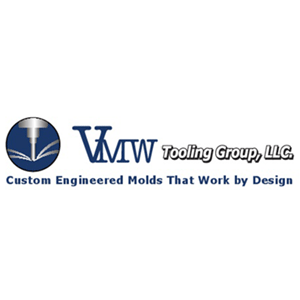Spray Skin Molds
The process of “Spray Skin” is essentially the forming of a thin urethane skin by spraying urethane material on a mold surface, allowing it to cure and then de-molding it or leaving it in position for the next operation. This “spray skin” process can also be used in conjunction with the “foam in Place” process where the skin remains on the lower mold surface and then has additional urethane poured onto the mold to form a urethane product that has a urethane skin “A” surface and a urethane backing to form the back side part geometry.
The “spray skin” process can hold very tight cross sectional thicknesses and can pick up extremely fine detail on the mold face such as stitching, seams, texture or grain detail, company logos and other details desired on the “A” side of the skin product. This “spray skin” technology can also allow for multicolor skins to be formed by masking sections of the mold surface and applying a 2nd or even 3rd color to the mold giving the appearance of a hand sewn trim cover. This provides a unique “A” surface skin that can be manufactured in mere minutes.
Tool styles can differ dependent on part geometry complexity and “A” side part detail. Often times an acid etch is put on the mold to provide a detailed grain that resembles leather or other automotive grain detail.
Mold types for spray skin:
Prototype spray skin molds
Often times a master part can be supplied so it can be duplicated with for the “spray skin” process. VMW can construct a manual parting line on a customer provided part and provide a high temperature epoxy mold surface suitable for pilot and sample part activity.
With proper care and attention to detail, VMW has been successful in capturing the most complicated grain surfaces with French seams and multicolor trim. Each of the high temperature epoxy molds has temperature control and can have trim line scribes for post operation activities as needed. The high temperature epoxy mold style is a relatively inexpensive way to conduct process prove out, allows robotic spray programs to be written and refined and can provide pilot or sample parts for testing prior to production mold construction.
Aluminum spray skin molds
Aluminum spray skin molds can be an excellent way to provide low to mid volume parts for your program. The aluminum mold surface can be a sand casting or CNC machined from aluminum billet. Sand castings can also be CNC machined and provide very good surface detail but isn’t recommended for “A” surface automotive standards.
The grain structure of a cast aluminum mold isn’t as tight as aluminum billet thus doesn’t lend itself to complex surface textures or part geometries. Each of the aluminum mold styles has its niche dependent on the above variables. Aluminum “spray skin” molds can be an excellent mold style excellent choice and has either gun drilled water lines or stainless steel tubing for temperature control.
Nickel shell spray skin molds
Nickel shell spray skin molds are extremely durable and provide exacting part surface quality with almost any grain or texture choice. The nickel shell mold surfaces start with a master model being CNC machined, then a cover stock is applied to the model to provide the desired grain. After the grained model is approved by the customer there is silicone master taken from the grained model and so a mandrel can be laminated and used to grow the nickel shell.
Once the nickel shell is complete it is back filled with epoxy resign and aluminum beads to gain back side support and structure. Water lines for temperature control can be added to the back side of the shell to aid in customer processing. Nickel shell molds have a very hard mold surface and serves as a high volume spray skin mold with excellent durability.
The “Spray skin” process currently serves many industries from automotive, recreational vehicle, agriculture, and industrial just to name a few. VMW has supplied “spray skin” molds and tooling for many soft trim components such as:
- Instrument panel assemblies
- Door panel assemblies
- Industrial and agricultural seating
- Water craft vehicle seats
VMW has provided molds and turnkey systems with its affiliate who provides the capital equipment for these “spray skin” turnkey systems. A complete work cell can be completed with molds, automation equipment, metering units, spray booths and all the needed ring line and spray head equipment for your project. This allows single source accountability throughout the entire mold and equipment build. VMW would be pleased to provide budgetary costs on your program, mold style recommendations and can assist with a complete turnkey to insure your program is a success.


